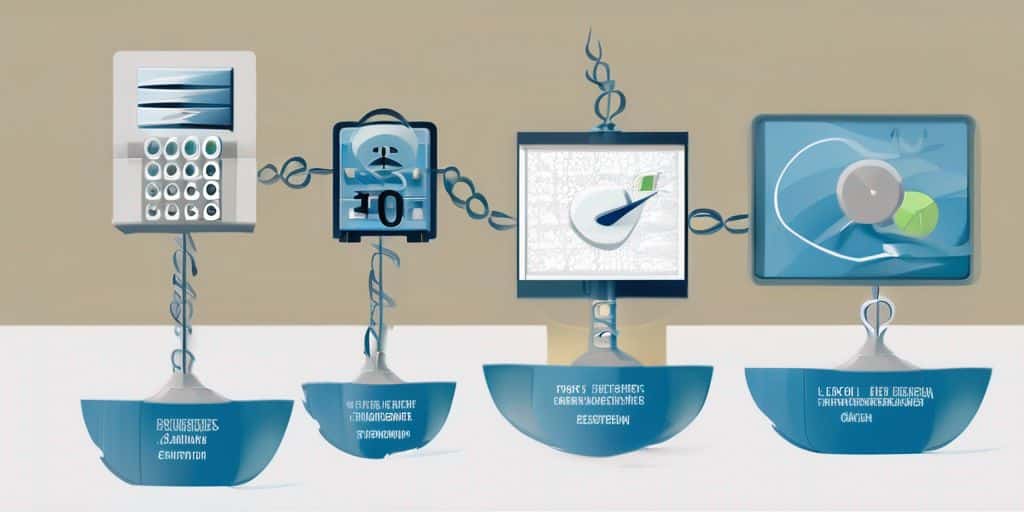Understanding Churn in the Telecom Industry

The Definition and Measurement of Churn
Churn in the telecoms industry refers to the rate at which customers discontinue their services with a telecom operator. It is an important metric that indicates customer loyalty and satisfaction. Measuring churn allows telecom companies to identify the reasons behind customer attrition and develop strategies to mitigate it. By understanding the factors contributing to churn, telecom operators can take proactive measures to retain customers and improve their overall business performance.
Factors Contributing to Churn in Telecoms
In the telecom industry, there are several factors that contribute to customer churn. One of the key factors is the rapid advancement of technology, particularly the emergence of 5G technology. As customers become more aware of the benefits and capabilities of 5G, they may be tempted to switch to a telecom provider that offers this advanced technology. This highlights the importance for telecom companies to stay up-to-date with the latest technological advancements and offer competitive services to retain their customers.
Another factor that contributes to churn is the level of customer satisfaction. If customers are not satisfied with the quality of service, customer support, or overall experience provided by their telecom provider, they are more likely to switch to a competitor. Telecom companies need to focus on improving customer experience and satisfaction through personalized interactions, efficient problem resolution, and proactive communication.
Additionally, pricing and offers play a significant role in customer churn. Customers are constantly looking for the best deals and incentives, and if they find a telecom provider that offers better pricing or attractive offers, they may be inclined to switch. Telecom companies need to analyze market trends, understand customer preferences, and create personalized offers and incentives to retain their customers.
To address these factors contributing to churn, telecom companies can implement various strategies. One effective strategy is to improve customer experience and satisfaction by investing in infrastructure, training customer support teams, and implementing efficient problem resolution processes. Another strategy is to offer personalized offers and incentives based on customer preferences and behavior. This can be achieved through data analysis and segmentation. Finally, proactive customer retention programs, such as loyalty programs and targeted marketing campaigns, can also help reduce churn by engaging and rewarding loyal customers.
Churn Analysis and Customer Segmentation
In the telecom industry, data analysis plays a crucial role in understanding customer behavior and predicting churn. By analyzing large volumes of customer data, telecom companies can gain valuable insights into the factors that contribute to churn. These insights can then be used to develop targeted strategies for reducing churn and improving customer retention.
Effective Churn Reduction Strategies

Improving Customer Experience and Satisfaction
In order to optimize processes and enhance customer experience, it is crucial for telecom companies to streamline their operations. By identifying and eliminating bottlenecks, companies can ensure smoother interactions with customers. Additionally, investing in advanced technologies and automation can help reduce response times and improve overall service quality. This not only enhances customer satisfaction but also increases operational efficiency.
Personalized Offers and Incentives
In order to effectively reduce churn, personalized offers and incentives play a crucial role. By tailoring offers and incentives to individual customers, telecom companies can create a sense of exclusivity and value, increasing customer loyalty and reducing the likelihood of churn. These personalized offers can include discounts, special promotions, or rewards programs that are specifically designed to meet the unique needs and preferences of each customer.
Additionally, CSPs can leverage customer data and analytics to identify patterns and trends, allowing them to anticipate customer needs and proactively offer personalized incentives. This data-driven approach not only enhances the customer experience but also enables telecom companies to target their marketing efforts more effectively.
To implement personalized offers and incentives successfully, telecom companies should consider the following strategies:
- Segmenting customers based on their preferences, usage patterns, and demographics to create targeted offers.
- Utilizing predictive analytics to anticipate customer needs and offer incentives at the right time.
- Monitoring customer feedback and satisfaction levels to continuously improve and refine personalized offers.
By adopting these strategies, telecom companies can foster stronger customer relationships and reduce churn rates.
Proactive Customer Retention Programs
Proactive customer retention programs are an essential component of an effective churn reduction strategy in the telecom industry. These programs aim to identify customers who are at risk of churning and take proactive measures to retain them. By analyzing customer behavior and usage patterns, telecom operators can identify early warning signs of potential churn and intervene before it’s too late. This can be done through targeted communication, personalized offers, and incentives to encourage customer loyalty. Additionally, proactive customer retention programs can involve proactive customer support, such as reaching out to customers who have experienced issues or providing proactive solutions to common problems. By taking a proactive approach to customer retention, telecom operators can significantly reduce churn rates and improve customer satisfaction.



